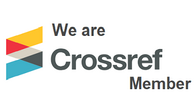Pendekatan real-life untuk meningkatkan kemampuan menyimak bahasa Indonesia bagi penutur asing
Abstract
This article explores the BIPA (Indonesian as a foreign language) learners’ competency in listening conversations using a real-life approach. This is based on the background that mastering a foreign language, especially listening in real-life conversation, is difficult even though they have learned the language. To address these issues, a real-life approach was adopted to train the BIPA students to listen to the conversations in a real-world setting. This study uses the qualitative descriptive method to investigate how using a real-life approach can aid BIPA learners in developing their listening abilities. BIPA students from India, Japan, Austria, and South Korea were included as a sample in this study. As a result, the appearance of other sound variants in real-life conversation turns out to become an aspect to distract them from listening. In addition, students frequently imitate pronunciation and pick up vocabulary from the literature and environment they are listening to. Therefore, the real-life approach helps the BIPA students to have a better understanding of listening in real-world conversations. Additionally, students can distinguish between different sound variants and pinpoint the purpose of their listening.
Keywords
Full Text:
PDF (Bahasa Indonesia)References
Agustinus, T. M., Rini, N., & Clark, M. (2019). Indonesian Students’ Listening Attitudes. Epigram, 16(2), 121–130. Diperoleh dari: https://doi.org/10.32722/epi.v16i2.1973.
Alzamil, J. (2021). Listening Skills: Important but Difficult to Learn. Arab World English Journal, 12 (3) 366-374. Diperoleh dari: https://dx.doi.org/10.24093/awej/vol12no3.25.
Astuti, W. & Bewe, N. (2020). Listening Learning of Indonesian for Speakers of Other Languages (BIPA) for Academic Purposes. Journal of Education, Teaching, and Learning, 5(2). 401—408.
Cissé, A., & Rasmussen, A. (2022). Qualitative Methods. Dalam Asmundson, G. J. G (Ed). Comprehensive Clinical Psychology, (2nd Edition), hlm. 91-103. Elsevier. Diperoleh dari: https://doi.org/10.1016/B978-0-12-818697-8.00216-8.
Everett, D. L. (2012). Language: The Cultural Tool. New York: Pantheon Books.
Hagen, A. M., Knoph, R., Hjetland, H. N., Rogde, K., Lawrence, J. F., Lervåg, A., & Melby-Lervåg, M. (2021) Measuring Listening Comprehension and Predicting Language Development in At-Risk Preschoolers. Scandinavian Journal of Educational Research, 1—15. Diperoleh dari: https://doi.org/10.1080/00313831.2021.1939136.
Irawan, D., Loren, F. T. A., Amalia, A. U., Prasetyo, E. P. Afriana, S., Alfira, D., & Limbong, N. P. (2022). Listening Skills in Learning Process of Indonesian Language for Foreign Speakers at the Tanjungpinang Central Immigration Detention Centre. Dalam: ICOME 2021, 3—5 November 2021, Tanjungpinang, Kepulauan Riau, Indonesia. Diperoleh dari: https://eudl.eu/doi/10.4108/eai.3-11-2021.2314838.
Loren, F. T. A. (2017). The Use of Learning Media on Listening Skill in Teaching Indonesian to Speakers of Other Language (TISOL). Lingua Didaktika: Jurnal Bahasa dan Pembelajaran Bahasa, 11(1), 1—12. Diperoleh dari: https://doi.org/10.24036/ld.v11i1.7625.
Ozverir, I., Osam, U. V., & Herrington, J. (2017). Investigating the Effects of Authentic Activities on Foreign Language Learning: A Design-based Research Approach. Educational Technology & Society, 20(4), 261–274.
Ramadhianti, A., & Somba, S. (2022). Listening Comprehension Difficulties in Indonesian EFL Students. Journal of Learning and Instructional Studies, 1(3), 111–121. Diperoleh dari: https://doi.org/10.46637/jlis.v1i3.7.
Saragih, M., & Situmorang, E. (2018). The Relationship Listening Intensively Toward Ability to Write News Content by Student Eighth Grade of SMP Negeri 1 Atap Tampahan in Academic Year 2017/2018. International Journal of English Literature and Social Sciences (IJELS), 3(2). 273—275. Diperoleh dari: https://dx.doi.org/10.22161/ijels.3.2.24.
Weir, C.J. (1990). Communicative Language Testing. London: Prentice Hall.
Widia, I. (2021). Alternatif Model Alat Evaluasi Kemahiran Menyimak Bahasa Indonesia bagi Penutur Asing Berlandaskan Alat Evaluasi Bahasa Asing. Jurnal Bahasa Indonesia bagi Penutur Asing (JBIPA), 3(1). 32—41. Diperoleh dari: https://doi.org/10.26499/jbipa.v3i1.3227
Widia, I., Syihabuddin, S., Damaianti, VS, & Mulyati, Y. (2022). The Model of Bipa Listening Evaluation and Its Implications For The Design of Listening Evaluation. International Journal of Education, 15(1). 28—37. Diperoleh dari: https://doi.org/10.17509/ije.v15i1.46154
Wolf, M.C., Muijselaar, M.M.L., Boonstra, A.M. et al. (2019). The relationship between reading and listening comprehension: shared and modality-specific components. Read and Writing, 32, 1747–1767. Diperoleh dari: https://doi.org/10.1007/s11145-018-9924-8.
Wulandari, T., & Sya’ya, N. (2021). The effectiveness of students’ listening skill by using podcast at the second grade of SMK Negeri 6 Balikpapan. Borneo Journal of Language and Education, 1(1). 27—40. Diperoleh dari: https://journal.uinsi.ac.id/index.php/bjle/article/view/3134.
DOI: https://doi.org/10.26499/jbipa.v5i1.5845
Refbacks
- There are currently no refbacks.
Publisher:
Badan Pengembangan dan Pembinaan Bahasa, Kementerian Pendidikan dan Kebudayaan Republik Indonesia
Address: Jl. Daksinapati Barat 4 No.11, RT.11/RW.14, Rawamangun, Kec. Pulo Gadung, Kota Jakarta Timur, Daerah Khusus Ibukota Jakarta 13220 Phone: +62 (021) 4896558

Jurnal Bahasa Indonesia bagi Penutur Asing (JBIPA) is licensed under a Creative Commons Attribution-NonCommercial 4.0 International License.
View My Stats -->





